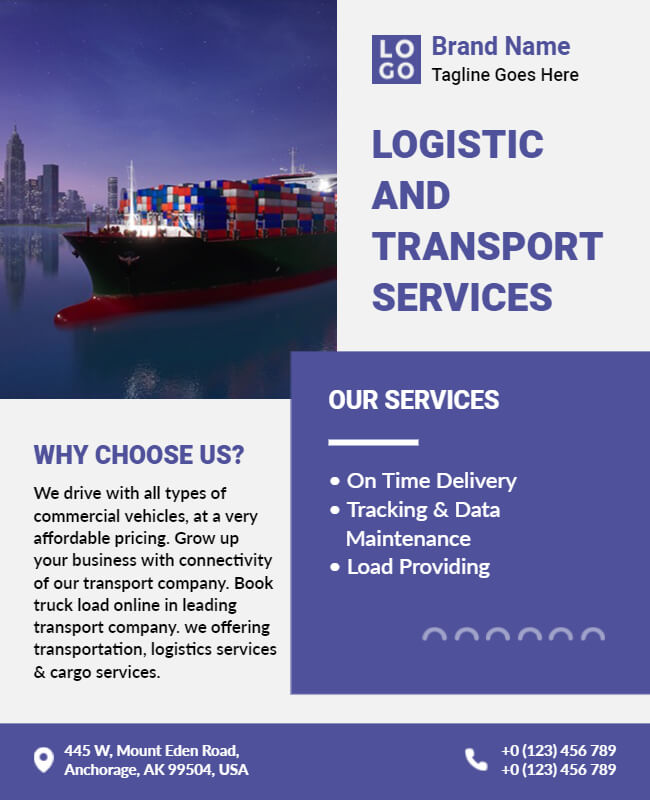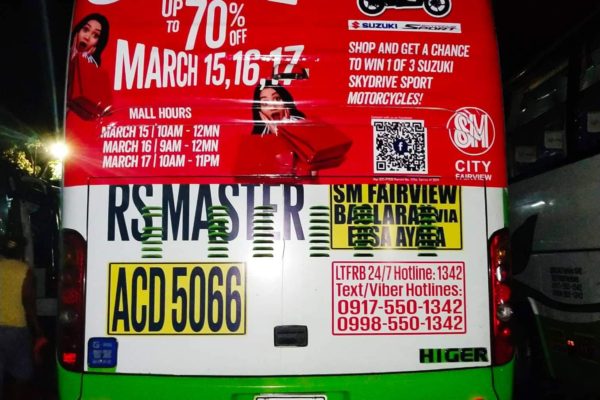Increase Brand Reach with Transit Advertising Philippines
Increase Brand Reach with Transit Advertising Philippines
Blog Article
A Thorough Assessment of the Techniques and Methods for Effective Transportation Advertising Campaigns
Transit marketing campaigns provide an unique possibility for brands to engage with varied audiences in dynamic environments. As we explore these crucial components, it ends up being clear that the path to an impactful transportation marketing strategy is both rewarding and detailed, increasing the question of exactly how ideal to navigate these intricacies for maximum brand exposure.
Comprehending Target Demographics
Recognizing target demographics is vital for the success of transit marketing campaign (Transit Advertising Philippines). Identifying certain audience sectors enables advertisers to tailor their messages successfully, making certain that the content resonates with the designated audiences. This technique boosts interaction and makes best use of return on investment
To properly evaluate target demographics, marketing professionals should think about numerous vital factors, consisting of age, income lifestyle, degree, and profession preferences. For circumstances, a campaign targeted at young experts might concentrate on benefit and modernity, while one targeting families could highlight safety and dependability. Moreover, geographical aspects such as rural versus urban settings can substantially affect customer behavior and preferences.
Information collection methods such as studies, focus teams, and social media analytics give valuable understandings into market trends and customer routines. By leveraging this information, advertisers can craft engaging stories that line up with the values and needs of their target audience.
Ultimately, understanding target demographics not only educates the critical instructions of transit marketing campaign yet additionally ensures that sources are alloted efficiently. This targeted method raises the likelihood of attaining project goals, promoting brand commitment, and driving conversions.
Innovative Layout Techniques
Efficient communication with target demographics depends greatly on innovative imaginative layout techniques in transit marketing projects. To efficiently capture interest in a congested aesthetic atmosphere, developers must focus on clarity and aesthetic impact. Making use of strong shades and high-contrast aspects can boost visibility, making sure that messages are quickly legible from a range.
Incorporating dynamic images that resonates with the target audience is essential. Aesthetic narration techniques can evoke feelings and develop memorable organizations with the brand. Additionally, tactical use of typography aids communicate necessary info quickly; understandable font styles and ideal sizes additionally enhance readability.
Integrating interactive components, such as QR codes or increased truth functions, can involve travelers past easy monitoring (Transit Advertising Philippines). These methods not just advertise user interaction but additionally link the void between standard marketing and electronic involvement
In addition, making use of room artistically-- whether on bus covers, transportation sanctuaries, or metro advertisements-- can cause ingenious formats that break the mold of standard advertising. By embracing artistic imagination while keeping brand name uniformity, projects can cultivate a strong link with their audience, inevitably driving both recognition and action. The combination of these design techniques is paramount for achieving effective transit advertising outcomes.
Strategic Positioning Techniques
Maximizing the influence of transportation marketing rests on strategic positioning techniques that ensure optimum presence and interaction. Efficient placement involves comprehending and analyzing high-traffic locations traveler demographics to determine one of the most useful places for ad display screens. As an example, positioning advertisements near entryways and leaves of transportation automobiles can capture the interest of boarding and touching down travelers, hence improving exposure.
Additionally, utilizing both outside and indoor surfaces of transportation vehicles can significantly expand reach. Exterior ads, visible throughout commutes, engage pedestrians and other motorists, while interior ads target travelers in a restricted environment. Furthermore, positioning advertisements in transportation centers, such as bus terminals or train stations, enables raised perceptions as travelers transition in between various modes of transport.
Timing is also crucial; aligning the project launch with peak travel periods makes best use of audience engagement - Transit Advertising Philippines. Additionally, leveraging digital displays en route settings can facilitate vibrant web content, giving real-time updates and enhancing individual communication. By employing you can find out more these calculated positioning techniques, marketers can guarantee that their transit ad campaign achieve optimal exposure, resonate with the target audience, and eventually drive preferred results

Measuring Campaign Efficiency
To analyze the success of transit ad campaign, it is important to utilize a variety of measurement methods that provide understandings into audience interaction and total performance. One primary technique is using essential performance signs (KPIs), such as reach, perceptions, and interaction rates, which quantify the number of individuals engaged and saw the advertisement with it.
Studies and focus groups can additionally be critical in evaluating consumer assumptions and recall, enabling marketing professionals to comprehend the impact of their messaging. In addition, tracking web site traffic and social media engagement throughout and after the additional reading project aids gauge direct actions to the advertising and marketing.
One more efficient strategy is utilizing location-based analytics, which can provide information walking traffic around particular transportation places, supplying insights into whether the project successfully recorded the interest of commuters. Additionally, evaluating sales information can expose relationships between transportation advertising and raised income, providing tangible evidence of a campaign's performance.
Study of Success
Understanding the efficiency of transportation ad campaign through dimension methods prepares for checking out real-world examples that illustrate successful results. One remarkable study involves a national beverage brand that used bus covers in city locations. The campaign aimed to boost brand exposure and sales throughout the summertime. By employing geo-targeted electronic ads and analytics, the brand name gauged a 30% rise in sales in areas where the wraps were plainly shown, demonstrating the straight influence of transportation advertising.
Another compelling example originates from a neighborhood nonprofit company that introduced a project on subway systems to promote an area event. The organization integrated lively visuals with QR codes guiding commuters to a registration web page. Post-campaign evaluation exposed a 50% boost in event participation compared to the previous year. Using straight interaction with innovation enhanced the campaign's reach and performance.

Final Thought
In recap, successful transportation marketing campaigns require a thorough strategy that incorporates an understanding of target demographics, ingenious layout techniques, and tactical positioning. Jointly, these methods foster brand name existence and maximize the return on financial investment in transit advertising initiatives.
Understanding target demographics is important for the success of transportation marketing campaigns.Effective communication with target demographics relies greatly on cutting-edge imaginative layout methods in transit advertising and marketing projects. By utilizing these tactical placement techniques, marketers can ensure that their transportation advertising and marketing campaigns achieve optimal presence, reverberate with the target audience, and inevitably drive desired end results.
Recognizing the performance of transportation marketing campaigns via measurement techniques lays the foundation for examining real-world examples that highlight effective results.In recap, effective transit advertising projects necessitate an extensive approach that integrates an understanding of target demographics, innovative layout methods, and strategic positioning.
Report this page